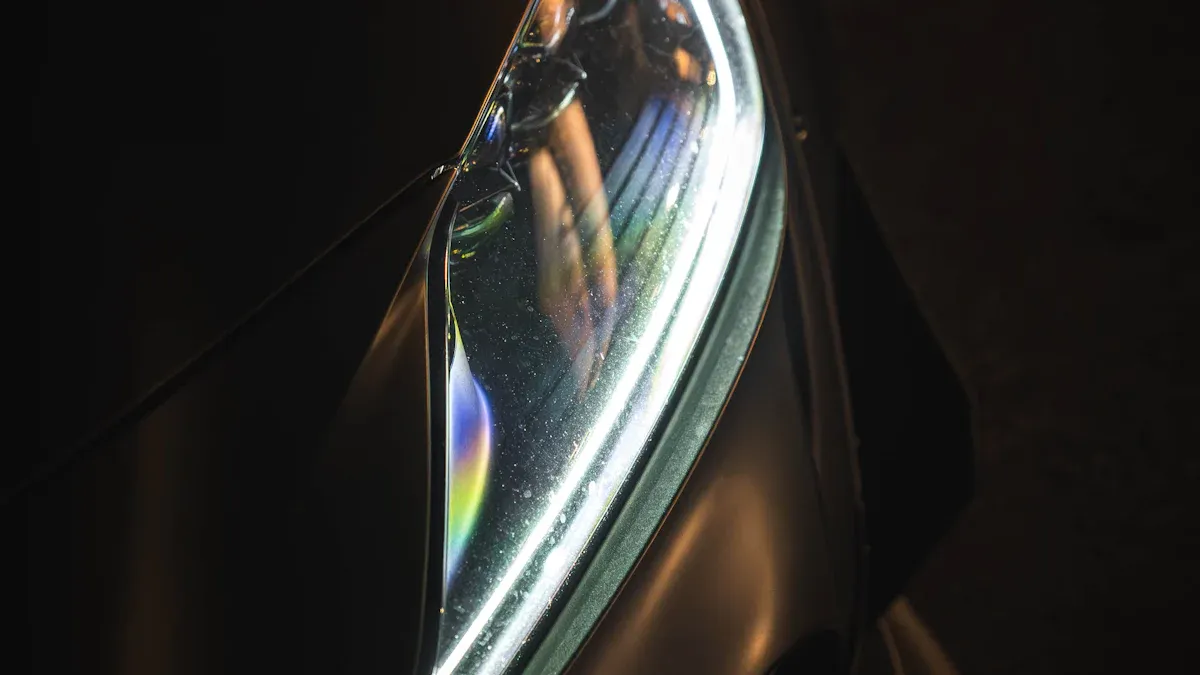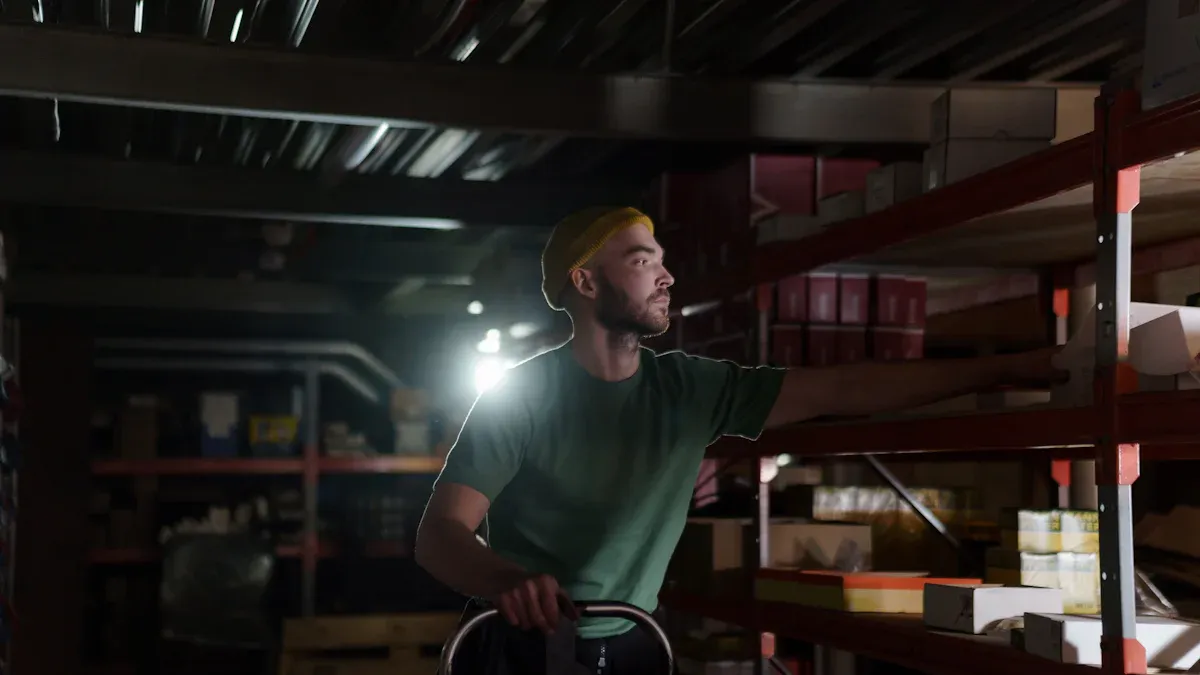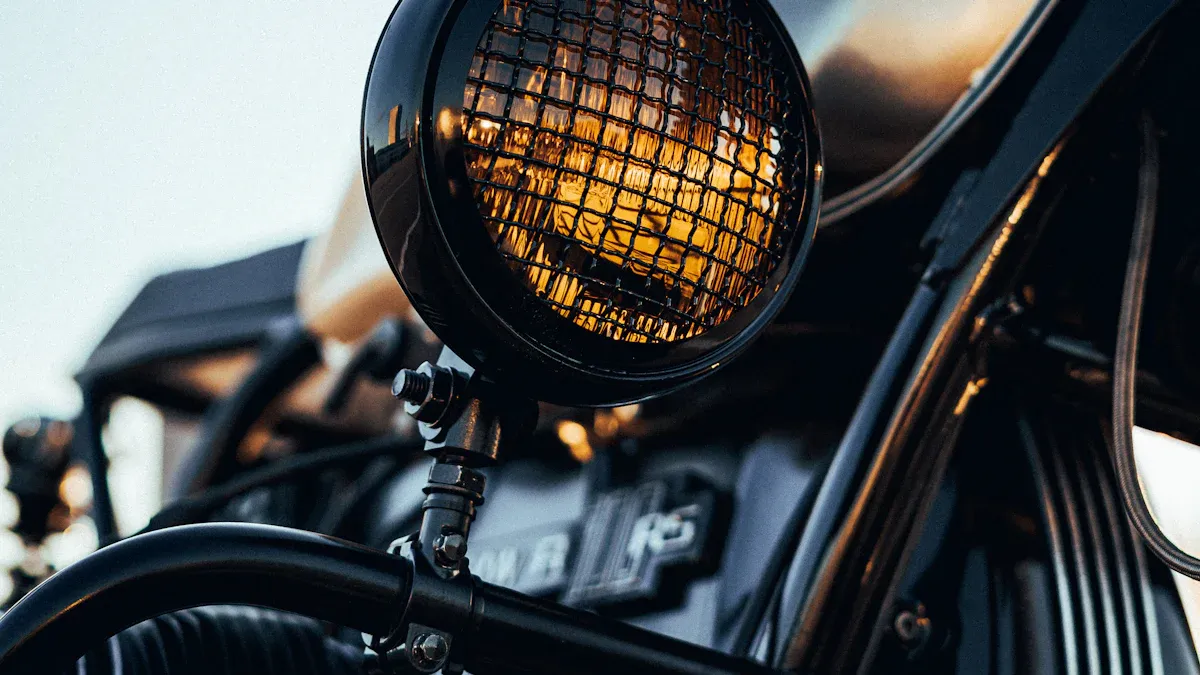How to use a headlamp for reading, crafting, or working without hands

A headlamp is more than just a tool—it’s your go-to solution for hands-free lighting. Whether you’re reading a book at night, crafting intricate designs, or tackling a DIY project, it keeps your hands free while providing focused light. Its versatility shines in various scenarios:
Perfect for reading or working at night without casting shadows.
Essential for outdoor activities like camping or hiking.
Handy for home improvement tasks in dim spaces.
With features like adjustable beams, multiple lighting modes, and ergonomic designs, a headlamp adapts to your needs. It’s not just a flashlight using your head—it’s a game-changer for precision and convenience.
Key Takeaways
A headlamp provides hands-free lighting, making it ideal for reading, crafting, and working in dim spaces.
Choose the right beam type and brightness level for your task. Use a floodlight for close work and a spotlight for distance.
Adjust the headlamp settings to prevent eye strain. Use lower brightness for reading and red-light mode for nighttime tasks.
Features of the Best Headlamp for Hands-Free Tasks

Beam type and adjustability
When choosing the best headlamp, beam type and adjustability are key factors. Most headlamps offer two beam types: floodlight and spotlight. Floodlight provides a wide, diffused light, perfect for close-range tasks like reading or crafting. Spotlight, on the other hand, delivers a focused beam for long-distance visibility, making it ideal for outdoor work or hiking. Some advanced models even switch automatically between these modes, helping you conserve battery life while maintaining optimal performance.
For example, the Petzl Actik series stands out for its wide beam and excellent light quality, which is especially useful for trail use. Meanwhile, the Black Diamond Spot series offers strong illumination but may feel harsh for some users. Adjustability also plays a big role. A headlamp with a tilting mechanism lets you direct the light exactly where you need it, whether you're working on a detailed craft project or navigating a dark path.
Brightness levels and modes
The best headlamp should offer multiple light modes to suit different tasks. Whether you're reading in bed or working in a dim garage, adjustable brightness levels ensure you get the right amount of light. Brightness is measured in lumens, and for indoor tasks, around 100 lumens is sufficient. For outdoor activities, you'll want a headlamp with 200 to 1000 lumens.
Headlamps are often tested for beam throw (how far the light reaches) and beam width (the coverage area). These factors ensure consistent lighting for your needs. Many models also include high, medium, and low light modes, as well as strobe or red-light options. These modes not only enhance versatility but also help conserve battery life.
Comfort and fit for extended use
Comfort is crucial, especially if you plan to wear your headlamp for long periods. Lightweight designs reduce strain, while adjustable straps ensure a snug fit without causing pressure. Look for headlamps with wide, perforated headbands for better ventilation and stability.
For instance, the Deploy 325 weighs just 1.4 ounces, making it so comfortable that testers reported forgetting they were wearing it. Features like the SPORT fit system allow for one-handed adjustments, making it easy to customize the fit on the go. Whether you're hiking, crafting, or working, a well-designed headlamp ensures you stay focused on the task without discomfort.
Practical Tips for Flashlight Using with a Headlamp

Reading: Adjusting the beam for even page illumination
Using a headlamp for reading can make your experience more comfortable, especially when you need hands-free lighting. To get the best results, adjust the beam angle so it evenly illuminates the pages without creating harsh shadows or glare. A floodlight beam works best for this purpose, as it provides a wide and soft light that won’t strain your eyes.
If your headlamp has adjustable brightness levels, choose a low or medium setting. This ensures you have enough light to read clearly without overwhelming your vision. For nighttime reading, consider using a red-light mode if available. It’s gentler on your eyes and won’t disturb others nearby.
Crafting: Ensuring precision with focused lighting
Crafting often requires precision, and a headlamp with focused lighting can help you see every detail. Use a spotlight beam for tasks like sewing, painting, or assembling intricate pieces. Position the beam directly on your workspace to avoid shadows that could interfere with your accuracy.
Here’s a quick guide to recommended lighting levels for crafting:
Task Type | Recommended Illuminance (lux) | Recommended Lumens |
|---|---|---|
Detailed work (crafting) | 750-1000 | 1000 or more |
High precision tasks (drawing) | 1000 or more | 1000 or more |
These settings ensure you have the right amount of light to focus on your project without straining your eyes.
Working: Adapting settings for different environments
When working in dark environments, your headlamp becomes an essential tool. Adjust the settings based on your surroundings to maximize efficiency. For close-up tasks, use a low mode to avoid excessive brightness. For general use, mid mode works well. If you need to illuminate a large area, switch to high mode or boost mode for short bursts of intense light.
Here’s a breakdown of key features to consider:
Feature | Description |
|---|---|
Brightness | Measured in lumens to ensure it meets specifications for adequate illumination. |
Beam Throw | Tests how far the light projects effectively, important for illuminating distant objects. |
Beam Width | Evaluates the coverage area to ensure a wide, consistent spread without dark spots. |
Lighting Modes | Different modes (low, mid, high, boost, red light) allow adaptation to specific tasks and conditions. |
For example:
Low Mode: Perfect for close-up tasks like wiring.
Mid Mode: Great for general repairs.
High Mode: Ideal for outdoor work or large spaces.
Red Light Mode: Useful for preserving night vision in tight spaces.
By tailoring your headlamp settings, you can tackle any task with confidence, even when working in dark environments.
Addressing Common Concerns with a Headlamp
Managing battery life for extended use
Maximizing your headlamp's battery life is essential, especially for long projects or outdoor adventures. You can start by choosing the right type of batteries. Rechargeable batteries are a great option if you want to save money and reduce waste. However, they need a power source for recharging. Disposable batteries last longer on the shelf and don’t require chargers, but they can cost more over time.
To extend battery life, avoid using high brightness settings unless absolutely necessary. Lower settings are often sufficient for most tasks and help conserve power. For example, the Fenix HP30R V2.0 offers an impressive headlamp run time of up to 120 hours on its low setting. This makes it perfect for extended use without frequent recharging.
Choosing the right light mode for specific tasks
Your headlamp likely comes with multiple light modes, and knowing when to use each one can make a big difference. For reading or close-up work, a low or medium setting works best. It provides enough light without being too harsh. For outdoor activities or large spaces, switch to a high or boost mode to illuminate a wider area.
Red-light mode is another handy feature. It’s ideal for preserving night vision and minimizing glare. If you’re working in a dark environment, this mode can help you see clearly without straining your eyes. Experiment with the settings to find what works best for your specific needs.
Avoiding eye strain with proper settings
Using a headlamp for long periods can sometimes cause eye strain, but you can prevent this with a few adjustments. First, position the beam so it doesn’t shine directly into your eyes or reflect off shiny surfaces. A floodlight beam is softer and more comfortable for tasks like reading or crafting.
Adjust the brightness to a comfortable level. Too much light can overwhelm your vision, while too little can make you squint. If your headlamp has a dimming feature, use it to fine-tune the light output. For nighttime use, red-light mode is a great choice. It’s gentle on your eyes and helps maintain a natural rhythm in low-light conditions.
By managing these settings, you can enjoy hands-free lighting without discomfort or fatigue.
A headlamp is your ultimate tool for hands free lighting, whether you're reading, crafting, or working. Its versatility and ease of use make it a must-have for any task requiring focused light. By focusing on features like beam type, brightness, and comfort, you can find the perfect headlamp to suit your needs.
To make the most of your headlamp, remember the practical tips shared earlier. Adjust the beam for even illumination, choose the right light mode, and manage battery life effectively. These small adjustments can significantly improve your experience.
Here’s a quick comparison of what makes a headlamp stand out:
Aspect | Description |
|---|---|
Ease of Use | Intuitive controls and user-friendly design make it accessible for everyone. |
Features | Adjustable settings and compatibility with accessories enhance usability for hands free tasks. |
Value | A balance between cost and performance ensures a worthwhile investment. |
With these insights, you can confidently choose and use a headlamp that fits your lifestyle. Whether you're working late, crafting intricate designs, or enjoying a good book, a headlamp keeps your hands free and your tasks illuminated.
FAQ
How do I clean my headlamp?
Use a damp cloth to wipe the headlamp. Avoid submerging it in water unless it’s waterproof. Check the manual for specific cleaning instructions.
Can I use a headlamp in the rain?
Yes, if it’s waterproof or water-resistant. Look for an IPX rating. Higher ratings mean better protection against water exposure.
What’s the best way to store a headlamp?
Remove the batteries to prevent corrosion. Store it in a cool, dry place. This keeps your headlamp ready for the next use.
See Also
Must-Have Headlamps for Convenient Hands-Free Lighting
Using Headlamp Flashlights for Effortless Night Fishing
Selecting the Perfect Headlamp Flashlight for Your Needs
